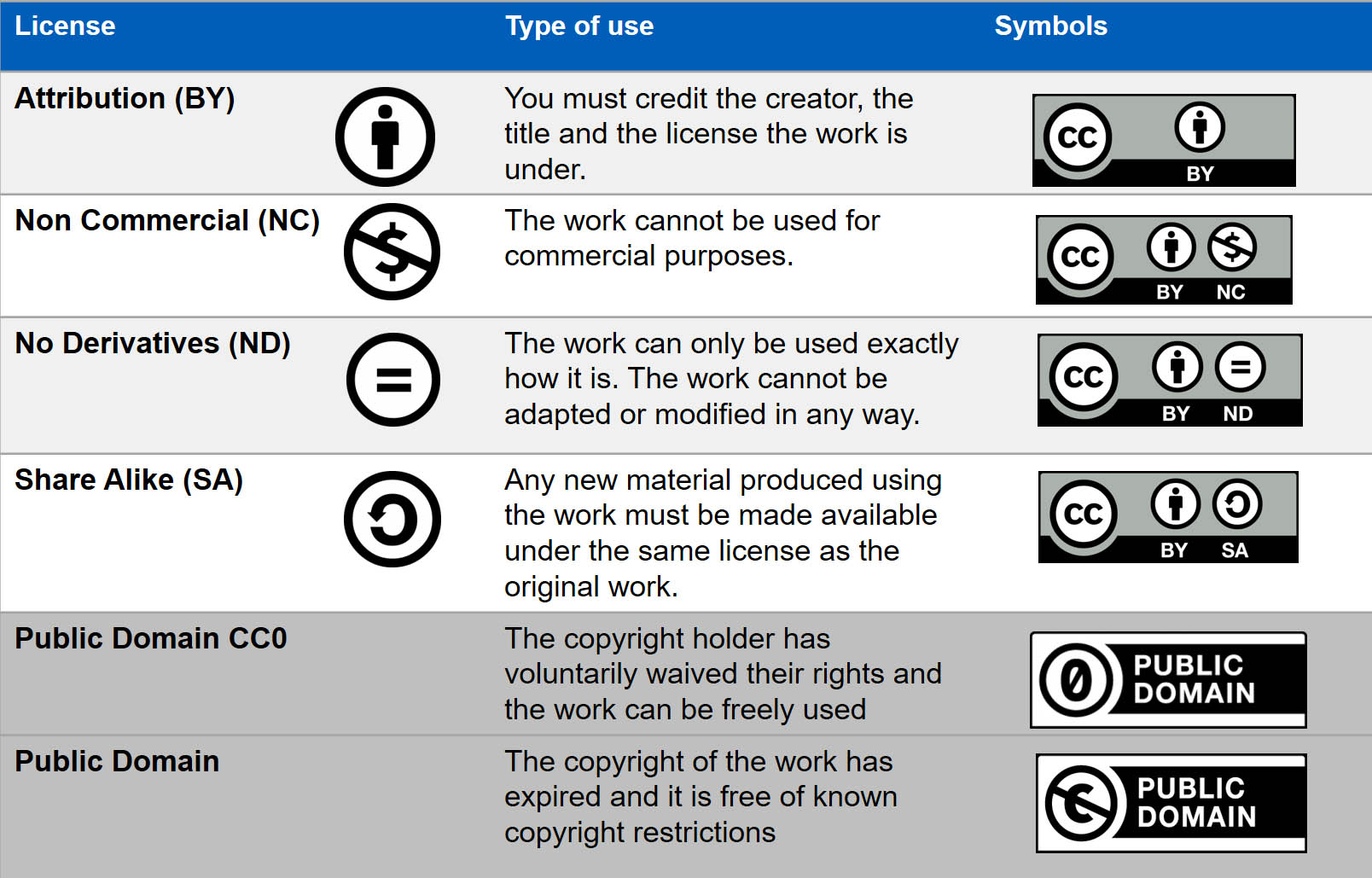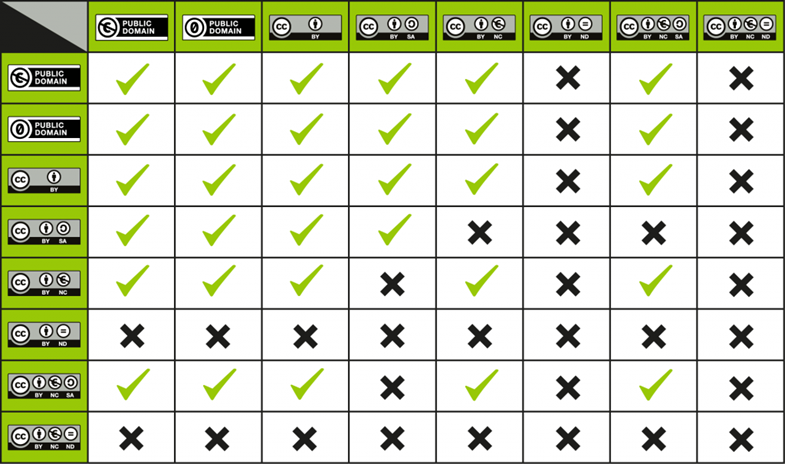7 Understanding Creative Commons licences
Before you start planning your project, you will need to ensure you understand copyright considerations for OER and how these differ from other types of educational materials. This includes understanding how open licences like Creative Commons licences work.
What is a Creative Commons Licence?
Creative Commons is a set of standardised licence features used to license copyrighted works (including music, artistic, literary and video works) for public use. Creative Commons works are free to use provided the licence terms are followed.

These conditions can be combined to form the six Creative Commons licences (CC0 is not considered a true CC licence). See below:
| Licence | Licence description |
Attribution CC BY |
This licence lets others distribute, remix, adapt, and build upon your work, even commercially, as long as they credit you for the original creation. This is the most accommodating of licences offered. Recommended for maximum dissemination and use of licenced materials. |
Attribution-ShareAlike CC BY-SA |
This licence lets others remix, adapt, and build upon your work even for commercial purposes, as long as they credit you and licence their new creations under the identical terms. All new works based on yours will carry the same licence, so any derivatives will also allow commercial use. This is the licence used by Wikipedia, and is recommended for materials that would benefit from incorporating content from Wikipedia and similarly licenced projects. |
Attribution-NoDerivatives CC BY-ND |
This licence lets others reuse the work for any purpose, including commercially; however, it cannot be shared with others in adapted form, and credit must be provided to you. |
Attribution-NonCommercial CC BY-NC |
This licence lets others remix, adapt, and build upon your work non-commercially, and although their new works must also acknowledge you and be non-commercial, they don’t have to licence their derivative works on the same terms. |
Attribution-NonCommercial-ShareAlike CC BY-NC-SA |
This licence lets others remix, adapt, and build upon your work non-commercially, as long as they credit you and licence their new creations under the identical terms. |
Attribution-NonCommercial-NoDerivatives
|
This licence is the most restrictive of our six main licences, only allowing others to download your works and share them with others as long as they credit you, but they can’t change them in any way or use them commercially. |
You can read more about how each CC licence works on the Creative Commons website.
Which Licence Works for You?
Follow the steps in this Licence Chooser to select the appropriate licence for your work. The Licence Chooser provides a fast, step-by-step approach to selecting a licence for your work.
Choosing a Creative Commons Licence
When planning for your publication you will have already considered what Creative Commons licence you want to apply to your finished work. As you prepare your manuscript, ensure that you understand the licence requirements of all third-party resources that you intend to use.
OER are meant to be flexible and allow for maximum dissemination. When choosing a licence, consider the rights you want to grant future users.
- You can learn more about the spectrum of licences offered by the Creative Commons in their Licences and Examples guide.
- Some funding agencies require the use of a specific licence when creating OER. If you receive funding, be sure to check the funding policy requirements.
- The open content you use in your work can sometimes dictate the licence under which the work will be distributed under.
- Attribute all content.
Watch: Creative Commons licence explained [5:32 mins].
Compatibility of Licences
In an ideal world, you would always be able to find resources with the most open licences. However, you will be more likely to deal with resources with different licences. This can be complicated as not all CC licences are compatible. For example, you cannot create a remix using works with a CC BY-SA licence, and a CC BY-NC-SA licence since both require the remixed work to be released under the same licence. The following chart can be used to help determine if resources with different licences are compatible.

Where Can I Access Support?
Please contact the OE team with any questions you may have about Creative Commons licensing.
Creative Commons FAQs
Have a question about Creative Commons licences? Browse through this extensive list of frequently asked questions.
Chapter Attribution
This chapter has been adapted in parts from:
Open Publishing Guide for Authors by University of Southern Queensland. Licensed under a Creative Commons Attribution-NonCommercial 4.0 International License.

